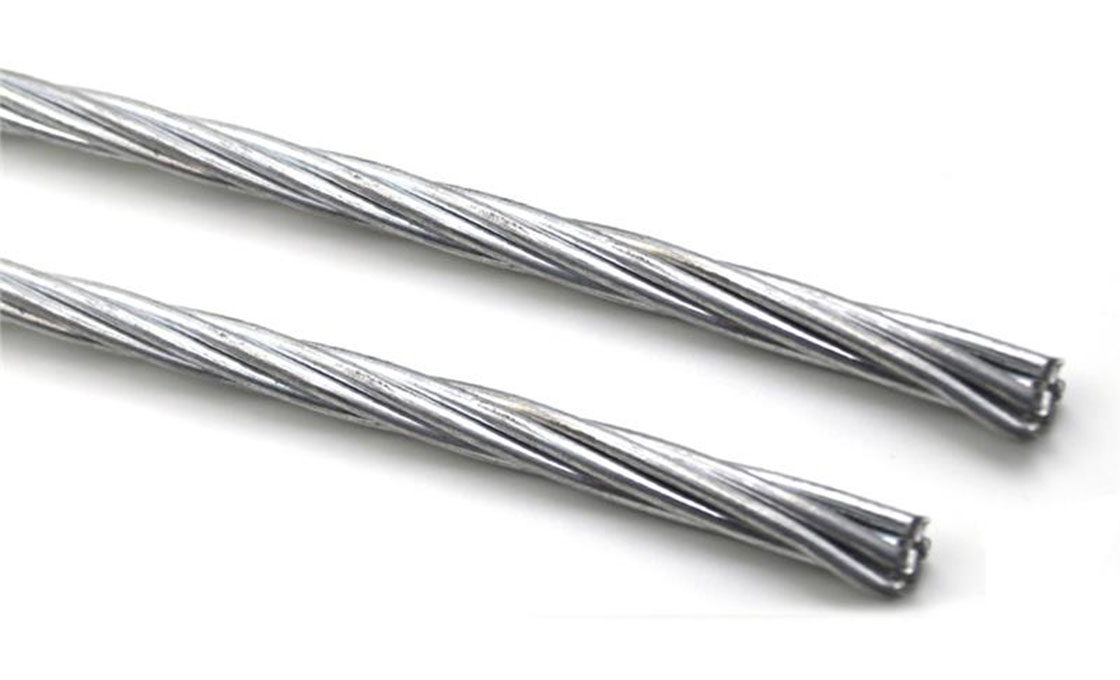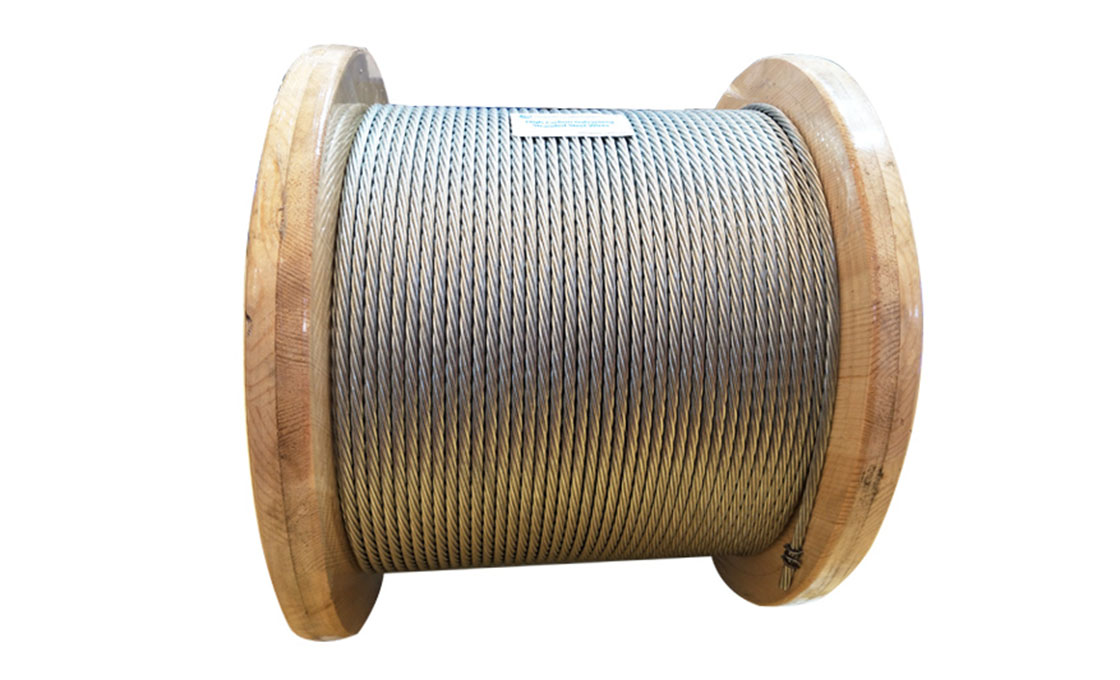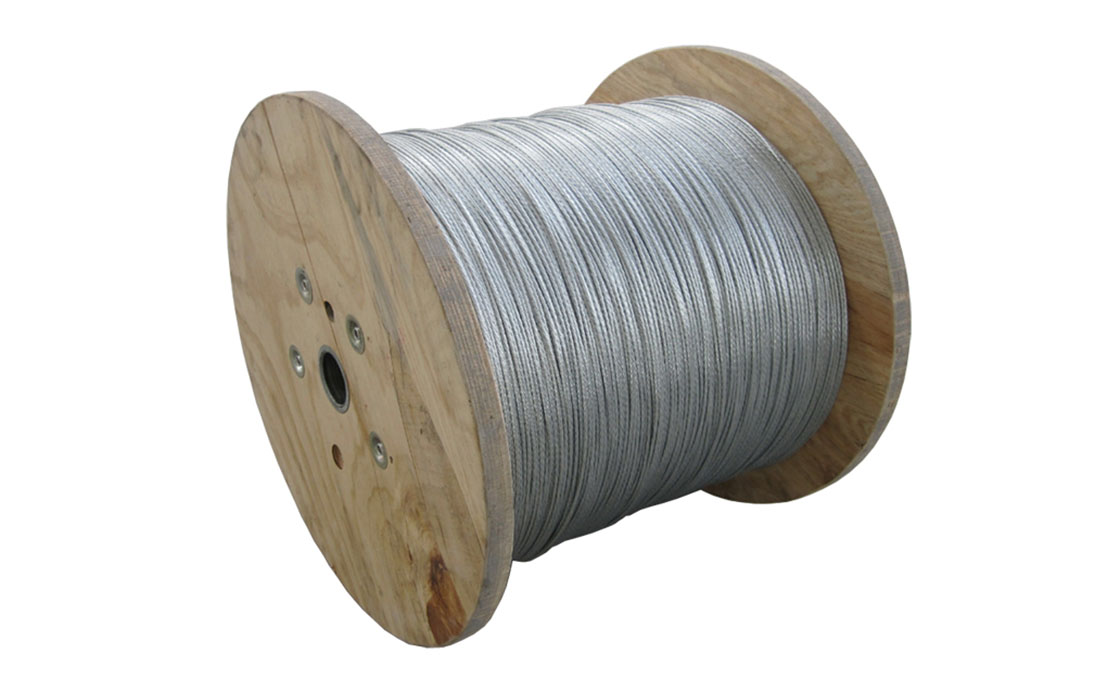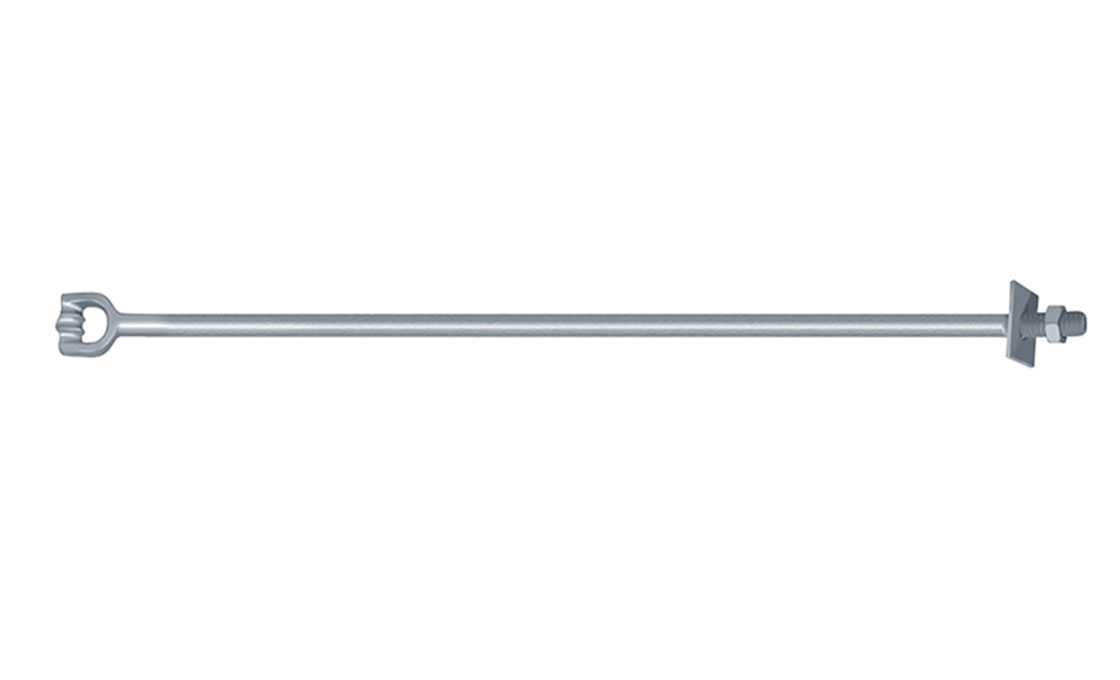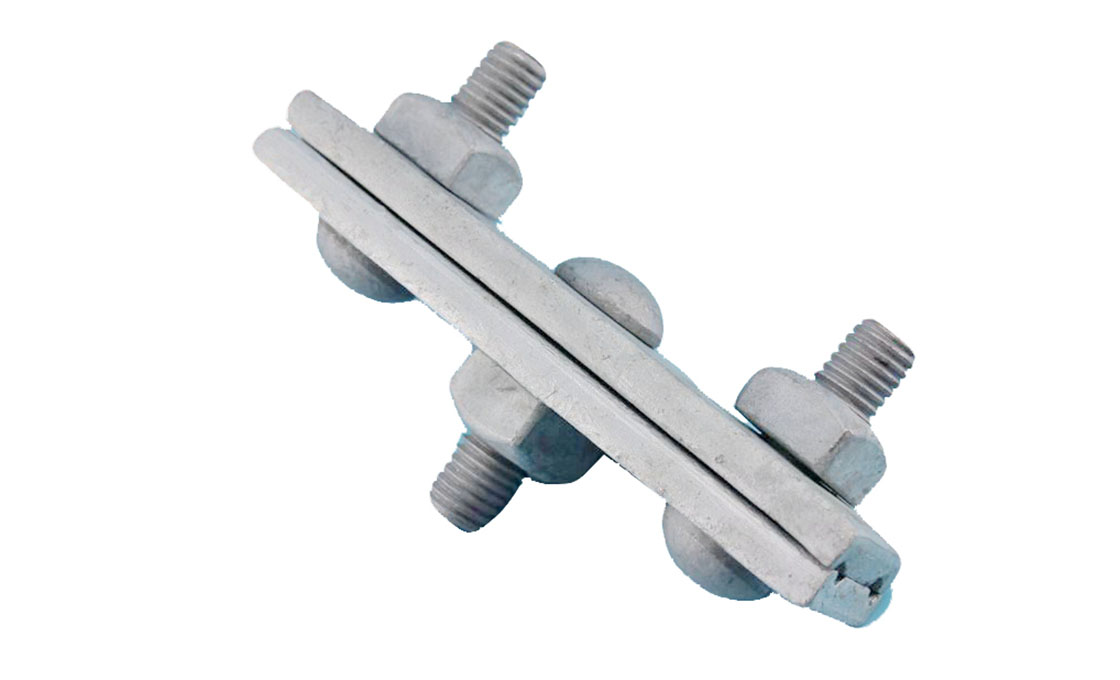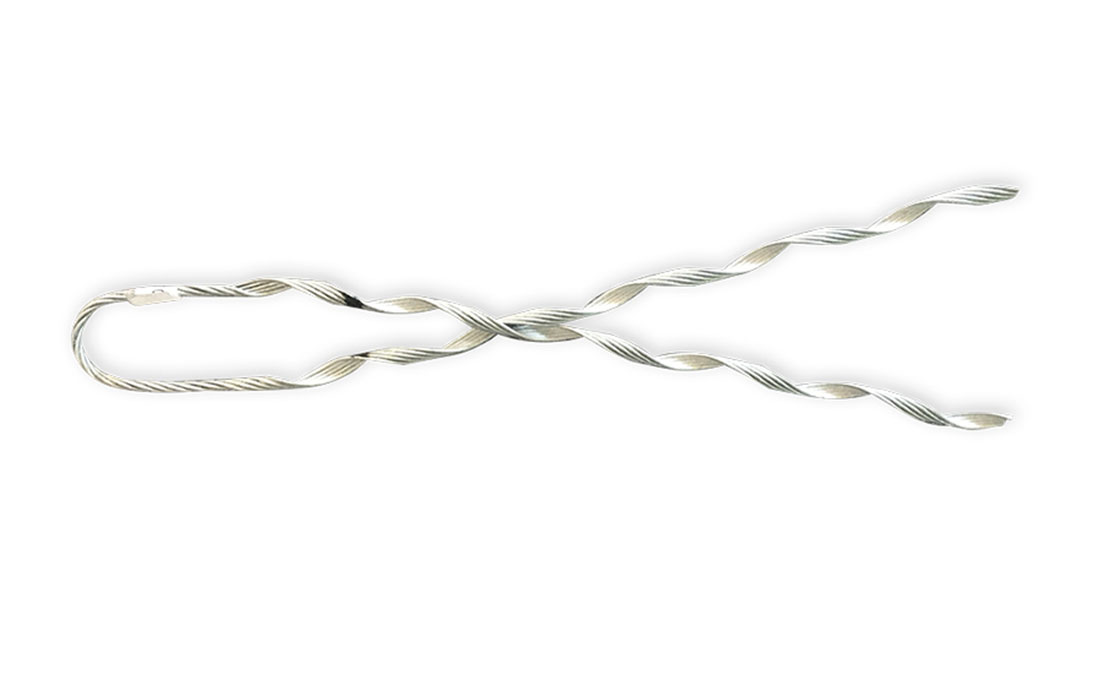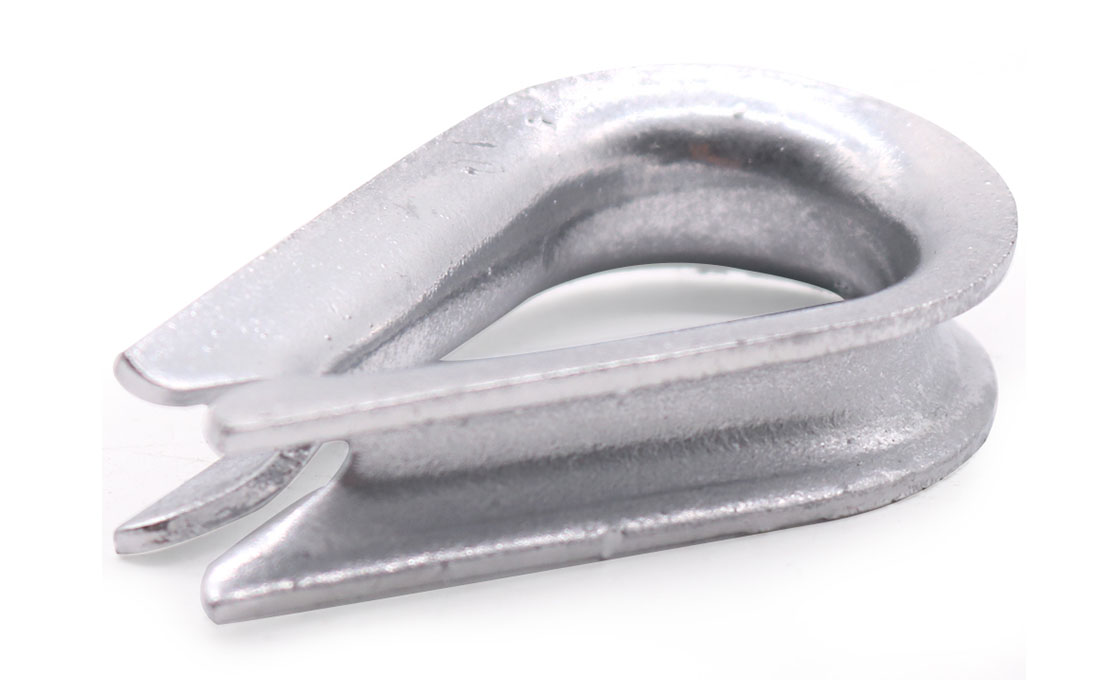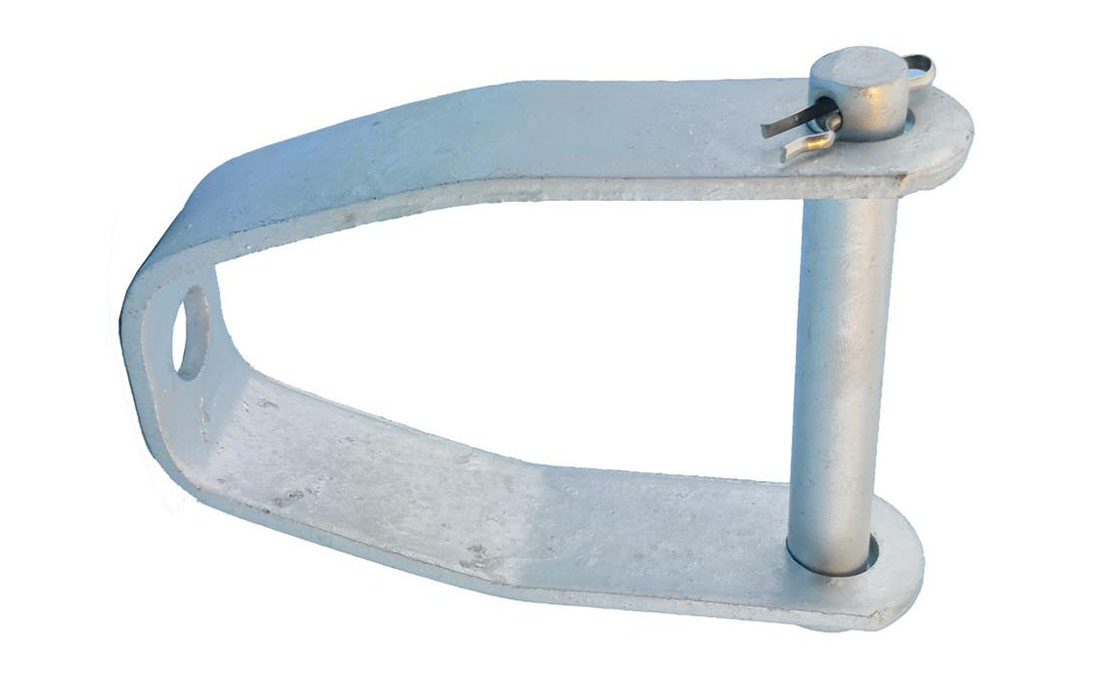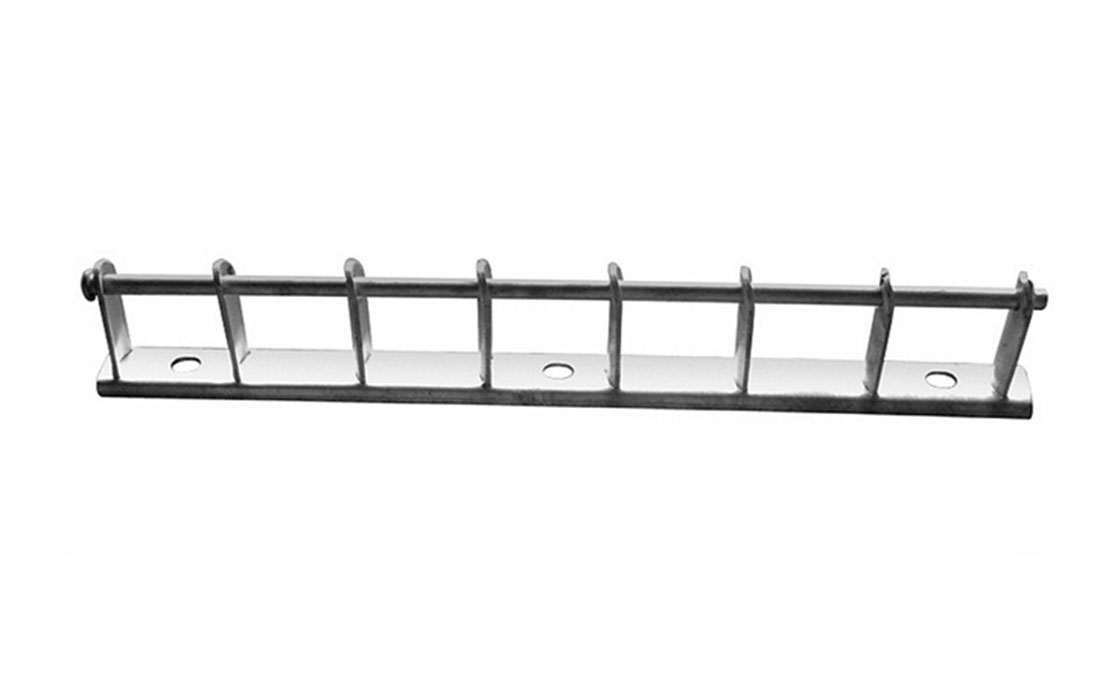Guy Wire
Guy wire, also known as stay wire and a messenger wire, is used on the overhead line construction purposes. The guy wire is assembled with a guy thimble, pole bracket, stay rod, and a turnbuckle stay set for performance. These accessories needed for the execution are with an aim to stabilize the pole and the rest of the conductors for optimum performance.
Powertelcom stay wires conductors are manufactured in the most appropriate manner that withstands the ongoing environmental stress that can come up with installation and other things. Few wires come with the galvanized ones to ensure nothing goes wrong when it comes to performance.
In the circular space, there is no room left for any joint, splice, or weld. This maximizes the longevity of the guy wire or the stay wire. This ultimately boosts its performance.
Open heart procedure, also known as electric furnace, or basic oxygen is used to ensure the quality is maximum and there is Zinc coated one. Moreover, the uniform quality set according to the standards has optimized the performance of the product to set the pace. You can get the work prescription and details with the idea ASTM has provided the customers with.
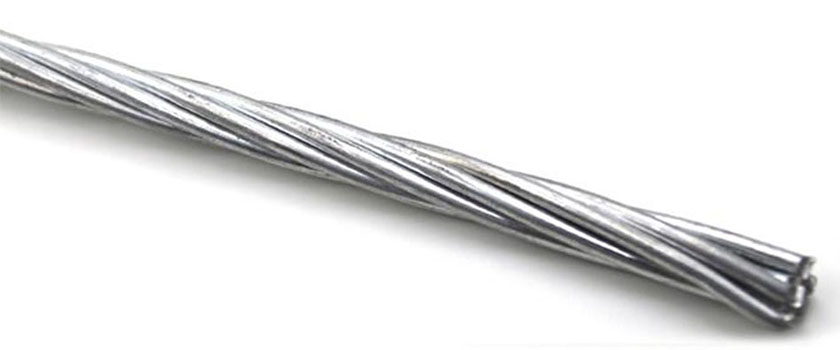
| Number of wires | Inch | diameter (mm) | EHS Grade (kN) | Approx weight (kg/km) |
| 7/2.03 | 1/4 | 6.35 | 29.58 | 181 |
| 7/2.64 | 5/16 | 7.94 | 49.82 | 305 |
| 7/3.05 | 3/8 | 9.52 | 68.503 | 407 |
| 7/3.68 | 7/16 | 11.11 | 92.523 | 594 |
| 7/4.19 | 1/2 | 12.7 | 119.657 | 768 |
| 19/3.18 | 5/8 | 15.88 | 178.819 | 1184 |
| Structure | Diameter(mm) | Tensile Strength MPa |
| 1X3 | 6.2-8.6 | 1175 1270 1370 1470 1570 |
| 1X7 | 3.0-12 | 1175 1270 1370 1470 1570 |
| 1X19 | 8.0-20 | 1175 1270 1370 1470 1570 |
Guy Wire: Ultimate Buying Guide
If you are in the electrical, telecommunication, and even building industries, you must have been using different types of wires. One of them is the guy wire.
Are you in any of these industries, and you are looking for the best guy wires for sale? Read on as I guide on how to buy the best guy wire in China.
What is Guy Wire?
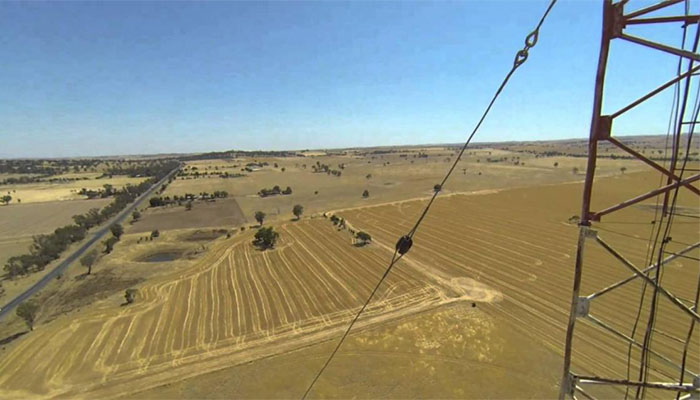
A guy-wire, guy rope, or guy-line is a tensioned cable that is designed and manufactured to enhance the stability of a free-standing structure.
Guy wires are commonly used in radio masts, ship masts, fire service extension structures, wind turbines, utility poles, The cables are also utilized in church raises and tents. A long and thin vertical mast supported by guy wires is known as a guyed mast.
The galvanized finish on the guy wire protects it from outdoor elements. Guy wire is meant to figure with several fittings and components, making it ideal for several different uses.
Structures that support the guy antennas are frequently of a lattice construction and are called “towers”. One end of the guy is attached to the structure, and the other is anchored to the bottom some distance away from the mast or tower base. This conjunction provides maximum stability to the fabric.
Why is it Called a Guy Wire
The name guy wire sounds strange, right? Why are these wires called “guy”?
Guy wire has many names. It’s also referred to as guyed wire, guy cable, guy strand, and guy anchors. People even (mistakenly) call it guide wire. The name guy wire springs from the term guy: defined as a rope, cord, or cable used to steady, guide, or secure something.
So, next time that you are in the process of buying a guy wire don’t be surprised when these other terms are used as an alternative to referring to the same wire.
Guy Wire Hardware
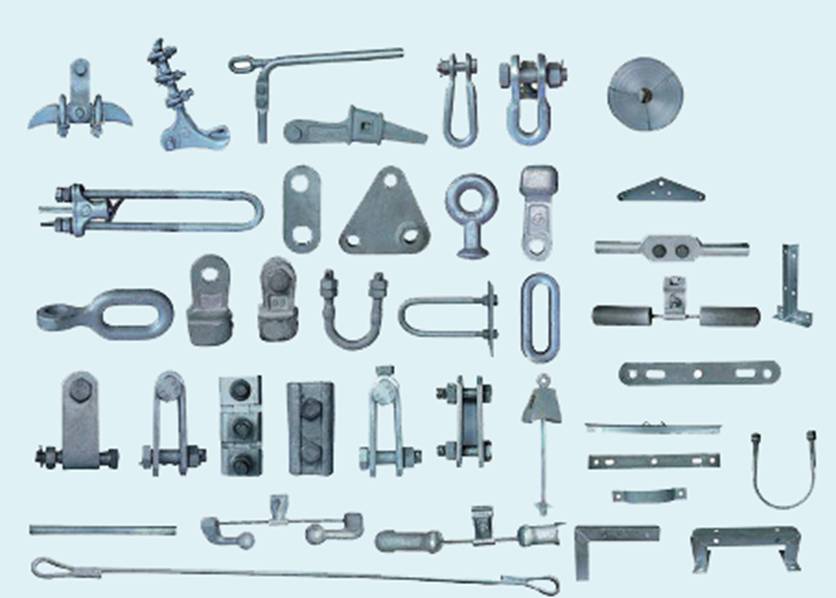
For a guy wire to function effectively, there are a number of fittings that are installed onto it. These components make up a complete guy wire kit, and they include:
Big Grip Dead Ends for Galvanized Strand
Big grip dead ends, also known as preforms, are used for top tensioning, often for the antenna, communications, and transmission towers.
End sleeves: These also referred to as ice clips that are needed when using big grip dead ends. They’re wont to prevent unravelling.
Drop forged wire rope clips are wont to clamp the unfinished business of wire rope after forming an eye fixed.
Shackles are primarily used for connecting wire rope, chain, and slings. Bolt type anchor shackles are often utilized in projects involving guy wire.
Thimbles are used to protect the attention or loop of wire rope.
Turnbuckles are a tool used to gather or push apart guy anchors.
How is a Guy Wire Used? Guy Wire Installation
Guy wires are attached to the highest point of the tower on one side and a secure position on the bottom on the opposite.
Guy wires are easy to install: attach three of them where the mast connects to the antenna. They will twist on, or you can attach them into the mounting bolts. For a super-secure fit, drill holes in your mast and use bolts to connect the wires, but that’s not super-necessary in most cases.
Attach the opposite side of the guy wires to points on your roof or the bottom and slowly tighten the cables so that all three are nice and tight, and therefore the antenna can’t move.
Ideally, the three wires should be mounted 120 degrees aside from one another, but within the case of enormous bowtie antennas, which will not be possible, so just fit them as far away from one another as possible without letting any of them block the antenna.
The idea of a typical guy wire is to transfer a number of the load of the tower to multiple points on the bottom. Albeit you’re employing a very skinny tower, a guyed installation acts as if the tower were as wide because of the triangle made by the wire’s attachment to the bottom.
Uses or Applications of Guy Wires
The best quality guy wires are quite versatile and have a wide range of applications. They are usually used on tall buildings and structures. Here are some of the most common uses of guy wires:
1. Utility pole guy wire
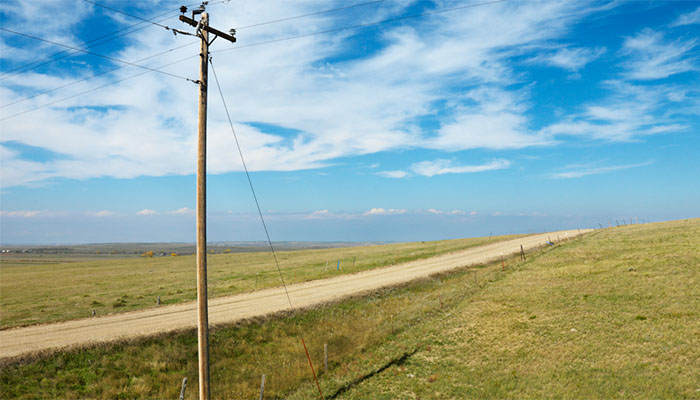
Utility poles are buried under the ground and have sufficient strength to face on their own. However, guy wires are only needed on some poles to support unbalanced lateral loads.
To guard the general public against accidents which may cause the cable to become electrified, utility guy cables usually either have a ceramic strain insulator at their highest points.
The lower end where the cable enters the bottom is generally encased during a length of a yellow plastic reflector to form it more visible so that people or vehicles don’t run into it.
In urban areas where the bottom area around the pole is restricted, a variation called a sidewalk guy is usually used. This type the guy line extends diagonally from the highest of the pole to a horizontal spar brace extending out from the center of the pole, and from this, it continues vertically to the bottom.
Thus rock bottom a part of the guy is vertical and doesn’t obstruct headroom, so a sidewalk can pass between the pole and, therefore, the guy.
2. Guy wire or water vessels
The guys supporting a sailboat mast are called “standing rigging”, and in modern water vessels, they are chrome steel wire rope. Guys are rigged to the bow and stern, usually as one guy. Lateral guy wires are attached to the “chainplates” port while the starboard attached to the hull.
Multiple guys are typically installed with spreaders to keep the mast straight (“in column”). Temporary guys also are used on a sailboat, and a fore-guy may be a term for a line (rope) attached to and intended to regulate the free end of a spar. On a contemporary sloop-rigged sailboat with an asymmetric spinnaker, the spinnaker pole is that the spar most ordinarily controlled by one or more guys.
3. Antenna guy wire
Electromagnetic fields from the antennas complicate the planning of guy wires that support mast antennas.
Conductive metal guy-wires whose lengths are almost quarter wavelength multiples of the transmitted frequency can distort the radiation framework of the antenna.
This also applies to guy wires of the surrounding masts or metal structures situated nearby.
To prevent this, each guy wire is split by strain insulators into multiple sections, each segment non-resonant at the transmitted wavelength.
Cylindrical or egg-shaped porcelain insulators (also called “egg insulators”) are usually used. Non-conductive guys of Kevlar fiber (Phillystran) or extruded fiberglass rod are frequently used as they don’t discharge the radiation onto the antenna.
The strength and low stretch properties of Kevlar fiber are similar to that of steel. However, Kevlar is extremely vulnerable to ultraviolet degradation, so it’s enclosed by UV resistant plastic sheath.
4. Other uses of guy wires
Apart from the above three, there are many other applications of guy wires. They include:
-Used for cranes
-On telecommunication cables
-Wind turbines
-Yacht and boats
-Ladders and many others
Should I Install Guy Wires?
There is no firm guideline for knowing if you should like guy wires. In most cases, it is always assumed that any tower over 20 feet should probably have them.
As a tower gets taller and taller, it also becomes more and more heavy and susceptible to be swayed by the wind. Guy wires, when properly installed, will help secure it.
If you are installing light masts, the guy wires that are used for units are approximately 19 feet high (and above).
At 19 feet, a guy wire is installed in the middle of the pole to stop swinging. Heavy-duty light towers at heights of 33 feet (and above) with a secure, bolted base may only utilize one set of guy wires, at the highest of the pole.
However, it’s essential to think that best practices involve two sets of guy wires for standard-height towers, located in the middle and at the highest points. These sections of the pole are the smallest levels of sturdy since they’re furthest from the foundational base of the unit.
For tall light masts or for installations in locations that are prone to bad weather, it is advisable to put in guy wires in 1/3 increments. With this configuration, the last (third) wire should be installed at the highest point of the mast. For telescoping light masts that need additional stability, a guy wire should be connected at each section.
The laws require installation of guy wires
In some cases, guy wires are mandatory. You ought to always ask your local town planning office with this type of installation.
This is often definitely true if you’re getting to put something up quite 10 feet above your roofline. Local laws regarding the guy wires installation are different from city to city.
Seek advice from the local engineers in your area. You will be advised whether it is mandatory or not.
What Makes Guy Wires Great for Building Structures?
There is no doubt that guy wire is used in different building structures. It is often anchored to both soft surfaces, like soil, and hard surfaces, like rock or concrete.
What could be the reasons behind the reliability of the guy wire?
Its versatility is one of the most reasons why it’s so popular amongst builders and structural engineers.
Not only can it’s used in all sorts of situations, but it also comes during a number of sizes, also as strengths starting from utility strength to extra high strength.
Another great advantage is that it is exceptionally resistant to corrosion.
Because it’s utilized in projects like utility poles, boats, and towers, it often exposed to weather, water, and other elements that would eventually cause structural damage. However, guy wire is coated with zinc to increase its lifespan and stop damage to your structure.
Guy Wire Calculator
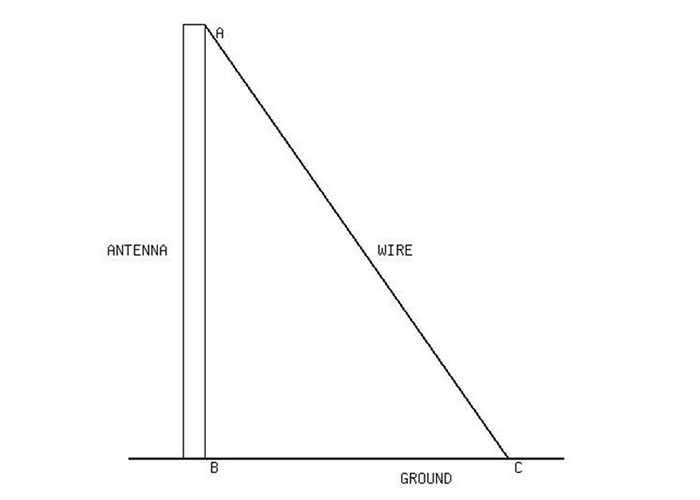
When buying guy wire for sale, there are several parameters that you need to consider. They include the length and tension of the guy wire.
With the guy wire calculator, you can easily find the exact values of these parameters.
Guy wire length calculation
When fixing a man wire system for a light-weight mast, it’s critical to make sure the length of the wires is accurate. The good news is that the variables of guy wires are straightforward.
Take note that the guy wires should extend at an angle not exceeding 45 degrees or even less. The guy wire supports the pole is erected at a straight 90 degrees, while the bottom offers a flat, level.
When the variables are constant, it might be possible to use the Pythagorean Theorem to seek out the length of the guy wire.
a2 + b2 = c2
This equation assumes that as a right-angled triangle, ‘a’ refers to the peak of the pole and ‘b’ refers to the space between the pole and therefore the installation point of the wire on the bottom. Variable’ c’ will generate the length of the guy wire at the highest position.
Guy wire tension calculation
You should also be able to determine the tension of the guy wire. This will determine the performance and overall effectiveness of this cable.
There is a formula for calculating the guy wire cable tension.
Cable tension= Total Tension× guy length/Anchor distance
If you are not sure about any issue regarding the guy wire calculator, it won’t hurt to allow experts to do the calculations.
Choosing Guy Wire Manufacturer
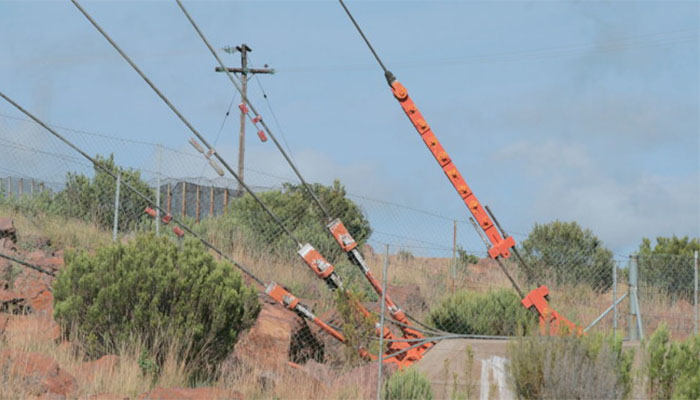
Wondering about where to buy the best guy wire for sale? The best bet is to find reliable guy wire manufacturers in China. This way, you will be in a position to find high-quality guy wires for sale.
Also, by buying from the manufacturer, you will be sure of getting affordable guy wires. To enjoy these and many other benefits, simply contact Jingyoung. We are a reputable manufacturer of guy wire in China.
FAQ
What is a guy wire?
A guy-wire, guy rope, or guy-line is a tensioned cable that is designed and manufactured to enhance the stability of a free-standing structure.
Guy wires are commonly used in radio masts, ship masts, fire service extension structures, wind turbines, utility poles, the cables are also utilized in church raises and tents.
What is the application of guy wires?
Guy wires are usually used on tall buildings and structures. Here are some of the most common uses:
- Utility pole guy wire
- Guy wire or water vessels
- Antenna guy wire
- Other uses of guy wires
Why is guy wire so widely used?
Guy wire is used in all sorts of situations, and it comes during a number of sizes, also as strengths starting from utility strength to extra high strength.
Guy wire coated with zinc is exceptionally resistant to corrosion because the coating can increase its lifespan and stop damage to your structure.
What hardware is used with guy wire?
For a guy wire to function effectively, there are a number of fittings that are installed onto it.
- Big Grip Dead Ends
- End sleeves
- Drop forged wire rope
- Shackles
- Turnbuckles
Reference:
How to Use a Guy Wire: Function, Fittings and Installation
